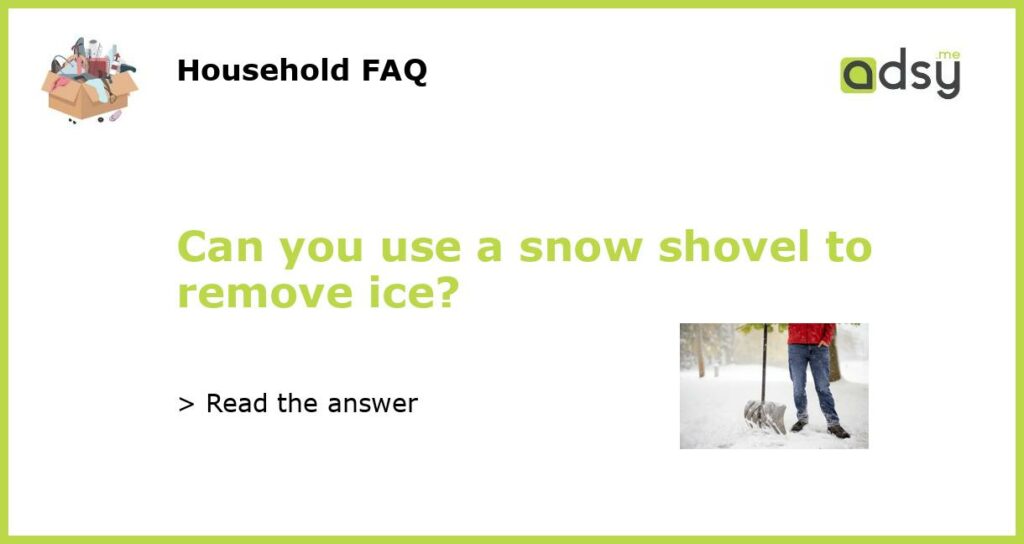Introduction
When it comes to removing ice, many people wonder if they can use a snow shovel instead of an ice scraper or other specialized tools. While a snow shovel can be a versatile tool for clearing snow, it may not be the best option for removing ice. In this article, we will explore whether or not you can use a snow shovel to remove ice and discuss alternative methods that may be more effective.
The limitations of a snow shovel for ice removal
Using a snow shovel to remove ice has its limitations. First and foremost, a snow shovel is not specifically designed for ice removal. Its primary function is to clear snow, which it does by pushing or lifting it away. When it comes to ice, the smooth surface and weight of the shovel may not provide enough grip or leverage to effectively break up or lift the ice.
In addition, using a snow shovel for ice removal can put unnecessary strain on the shovel, potentially causing damage or making it less effective for its intended purpose. The force required to break up ice and the scraping motion involved may cause the blade or handle of the shovel to bend or break. This can be especially problematic if you live in an area with heavy or frozen precipitation, where ice removal is a regular necessity.
Alternative methods for removing ice
While a snow shovel may not be the best tool for removing ice, there are several alternatives that can be more effective. One popular option is an ice scraper, which is specifically designed for removing ice from surfaces such as car windshields. Ice scrapers typically have a sharp blade or edge that allows you to easily and safely remove ice without damaging the surface underneath.
Another alternative to using a snow shovel for ice removal is using a de-icing agent. De-icing agents, such as rock salt or calcium chloride, can help melt ice and prevent refreezing. They are commonly used on sidewalks, driveways, and other surfaces where ice can be a safety hazard. However, it’s important to follow the instructions provided by the manufacturer and use de-icing agents in moderation to avoid potential environmental damage.
For thicker or more stubborn ice, applying a heat source can be effective. This can be done using a heat gun, hot water, or even a hairdryer. The heat source helps to melt the ice, making it easier to remove. However, caution should be exercised when using a heat source, as excessive heat or sudden temperature changes can cause glass or other surfaces to crack or shatter.
The benefits of using the right tool for the job
While it may be tempting to use a snow shovel for ice removal due to its accessibility and familiarity, using the right tool for the job can save you time, effort, and potentially prevent damage. A specialized ice scraper or de-icing agent is designed to effectively tackle ice in a way that a snow shovel cannot. By using the appropriate tool, you can remove ice more efficiently and minimize the risk of causing damage to surfaces or tools.
Furthermore, using the right tool for ice removal can help ensure your safety. Ice can be slippery and hazardous, especially on sidewalks, driveways, and other high-traffic areas. By using a tool specifically designed for ice removal, you can reduce the risk of slips, falls, and injuries.
Conclusion
While a snow shovel may seem like a convenient option for removing ice, it is not the most effective tool for the job. Using a snow shovel for ice removal can be inefficient and potentially cause damage to the shovel or the surface being cleared. Instead, consider using specialized tools such as ice scrapers, de-icing agents, or heat sources to effectively and safely remove ice. By using the right tool for the job, you can save time, effort, and potentially prevent injuries or damage.






